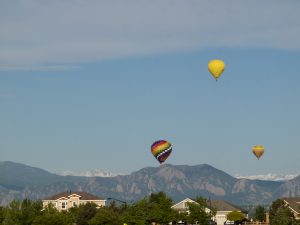
Top 5 Aviation Communities in the U.S.
These towns are heavily influenced by the presence of general aviation and residential airparks.
It’s big, beefy, has plenty of power and is just as capable on water floats as it is on wheels. Indeed, Cessna’s venerable 206 Stationair long ago earned its reputation as a flying SUV. Load it with people, cargo and even small motorcycles. And better yet, with the right instruction, transitioning to a Stationair is straightforward.
Plus, 206 ownership is easy because like other Cessna piston singles, most shops can easily wrench them. So popular has been the 206’s combination of simplicity and load-carrying that it’s one of three singles Cessna saw fit to bring back to the land of the living when it restarted piston production. Today, while prices for good ones are up (like most singles), there are plenty of decent 206s on the market. Here’s a look at the current market. First, some history.
What ultimately became the 206 Stationair was originally introduced in 1963 as the 205, a fixed-gear 210, technically known as the 210-5. It had two doors up front and a relatively small rear door on the left side. The engine was a 260-HP Continental IO-470. This airplane was a fixed-gear version of the recently revamped 210; it was produced for two years, with 577 delivered. Keep in mind that Cessna’s biggest fixed-gear piston single is really three models, though all are essentially the same airframe.
In 1964, Cessna responded to demand for more utility and created the U206 (U for “utility”) Super Skywagon, with a 285-HP Continental IO-520-A, redesigned wing and bigger flaps. Intended as a flying pickup truck, even the seats were optional. There was one door for the pilot and a big double door aft on the right side.
The next model year saw the 205 become the P206 Super Skylane, with “P” representing “personal” or “passenger,” depending on with whom you’re speaking. The P206 had the same door arrangement as the 205, but with the bigger engine from the 206. The U206 was by far the more popular of the two.
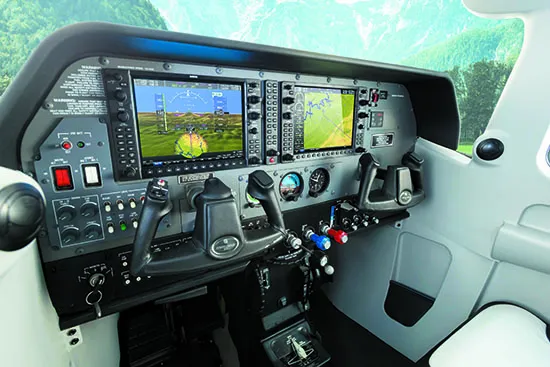
In 1967, the U model got a takeoff-weight boost and a new engine, the 300-HP Continental IO-520-F, while the P model kept the 285-HP O-520-A. Turbocharging became available on both variants in 1966, with a 285-HP Continental TSIO-520-C. The P206 was discontinued in 1970, with a total production run of 647. The remaining U206 and TU206 were offered with either a utility or passenger interior, and renamed Stationair.
A stretch of the fuselage brought into being the 207 Skywagon in 1969, powered by the 300-HP IO-520-F. One more seat was added, bringing the number available to seven. Useful load went up by about 30 pounds. An additional bonus was a nose baggage compartment, easing the task of getting the CG in the proper place during loading. The turbo model of the 207 was powered by a TSIO-520-G, also with 300 HP.
Camber-lift wings, which feature a slightly cuffed leading edge, were added in 1972. These improved low-speed handling at almost no cost to cruise speeds. At the same time, the baggage compartment got a 7-inch stretch. An aerodynamic cleanup in 1975 boosted cruise speed by about 6 MPH. The cleanup included more-streamlined wheel pants and improved cowl flaps.
In 1977, the horsepower of the turbo engine was upped to 310 (for takeoff only) on both the TU206 and the T207. A wet-wing fuel system was introduced in 1979.
In 1980, another seat was added to the back row of the 207, making it an eight-place airplane. This created the Stationair 8, but the Cessna designator remained Model 207. The world would have to wait for the Caravan to see a Model 208 and what may be the ultimate evolution of the high-wing, strut-braced single. The 207 was discontinued in 1984, and the 206 two years later. It was a great run.
Along the way, 206s saw several suffixes added, starting with the 206A in 1966 and culminating, temporarily, with the 206G in 1986. More than 7000, by serial number, U206s had entered the market, along with 647 P206s, the 577 aforementioned 205s and another 788 207s.
But then a funny thing happened: In the mid-1990s, Cessna started making piston-powered airplanes again. After starting up assembly lines for the 172 and 182, the Model 206 returned in 1998 as the 206H, powered not by a Continental IO-520 but by a normally aspirated 300-HP Lycoming IO-540-AC1A. It was joined by the T206H, powered by a turbocharged 310-HP Lycoming TIO-540-AJ1A.
Cessna stopped production of the normally aspirated 206 somewhere around 2013, but has kept going with the T206H and in 2022 is selling them for we’ll north of $700,000. Unlike the Continental-powered 206s, the H model is available with a five-place, club-seating option.

The Cessna 206 Stationair has undergone significant changes in pricing and specifications over the years, as illustrated in the provided model history. The earliest models, such as the 1965 U206 Super Skywagon and the 1967 U206B Super Skywagon, were equipped with the Continental IO-520 series engines, featuring a TBO (Time Between Overhaul) of 1700 hours and an overhaul cost of $40,000. These models had a typical retail price of around $132,000 to $138,000, with a useful load capacity of approximately 1540 pounds and a cruise speed of about 144 knots.
As tim went on, the specifications improved. The 1980 U206G II Stationair and its turbo variant, the TU206G II Turbo Stationair, introduced more powerful engines and higher cruise speeds, with typical retail prices increasing to $200,000 and $205,000, respectively. The fuel capacity also increased to 92 gallons, enhancing their operational range.
By the 2000s, the Cessna 206 models, such as the 2004 206H Stationair and the 2004-09 T206H Turbo Stationair, featured the Lycoming IO-540 series engines with a TBO of 2000 hours and a higher overhaul cost of $52,000. These later models offered improved performance, with typical retail prices escalating to $400,000 and $450,000. The latest models, from 2012 to 2019, saw a dramatic increase in typical retail price, reaching around $700,000, reflecting the advancements in technology, performance, and overall value.
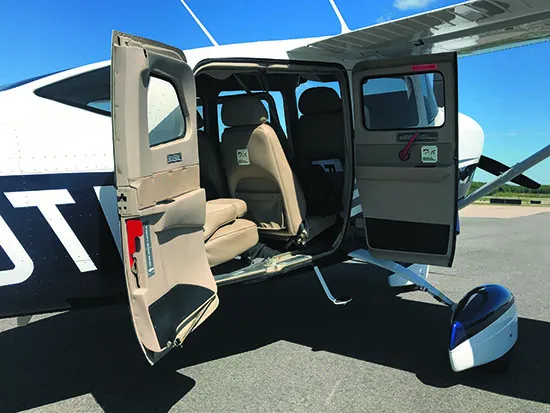
Of course, that’s why most people buy a Stationair in the first place. While no airplane can handle anything you can fit in it, the Stationair comes closer than most. Full-fuel payloads of 1000 pounds or better are not at all uncommon.
The big rear cargo doors—creating an opening more than 44 inches wide—make getting bulky cargoes inside less of a chore than in other aircraft. Another nice touch is the lack of a lip at the doors, so cargoes don’t have to be maneuvered up and over to get them inside—it makes a big difference.
The airplane can be flown with the cargo doors off which, combined with solid low-speed handling, makes it popular with aerial photographers and public benefit flying organizations involved in conservation research and monitoring. Public benefit flying organizations LightHawk and CAVU have owned multiple 206s, using them in remote areas.
Specialty kits were made available so the Stationair could take on such jobs as glider towing, parachute jumping and even aerial hearse service. There also is a cargo pod available. When using a cargo pod, make sure you follow any limitations on flap deflection that are on the STC for the installation.
With or without the cargo pod, the Stationairs offer ample loading flexibility. The allowable CG range is unusually long, making cargo/passenger positioning less of a juggling act than with many aircraft. However, despite some pilots’ assertions that “If you can get it in, you can take off,” weight and balance computations are not optional. Plenty of accidents over the years show it is possible to load a Stationair outside its envelope.
As for cabin comfort, newer Stationairs are nicely appointed, but these airplanes aren’t exactly flying Cadillac Escalades. While the Stationairs have large cabins, they’re not long on comfort with a full load of passengers. Noise levels, particularly during takeoff and climb, can be fairly high as piston-engined singles go. And the rearmost seats—row three in the 206, rows three and four in the 207—leave little in the way of legroom.
Another comfort consideration is the baggage compartment. In spite of Cessna’s best efforts, it doesn’t quite match the capabilities of the passenger compartment. As a result, passengers may find themselves sharing space with their bags. Again, if you routinely carry big loads, invest in a cargo pod.
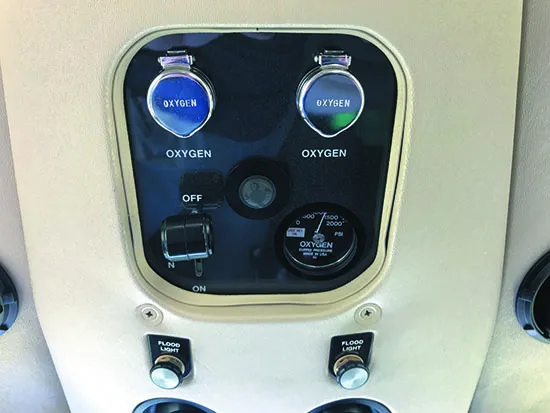
Handling matches the aircraft’s size—it’s not like a flying sports car. Pilots who transition to the Stationair after climbing the Cessna model ladder may find the aircraft is just more of the same—only heavier, although the ailerons are notably responsive, even at slow speeds. Few owners seem to mind the fairly heavy controls because face it, snappy handling is not why they bought the airplane.
Speak with an aviation finance professional today to get your real rate on your next aircraft purchase!
Handling matches the aircraft’s size—it’s not like a flying sports car. Pilots who transition to the Stationair after climbing the Cessna model ladder may find the aircraft is just more of the same—only heavier, although the ailerons are notably responsive, even at slow speeds. Few owners seem to mind the fairly heavy controls because face it, snappy handling is not why they bought the airplane.
This is not without its benefits, though. It makes the Stationair an excellent IFR platform—stable and rock-solid. It also makes for a relatively smooth ride in turbulence.
Another benefit is that the Stationair is reluctant to stall. Pitch forces are fairly heavy to begin with. Compounding this is the generally nose-heavy loading of the airplane. Since the CG envelope is so long, and most everyone wants to sit up front, the CG is often at or near its forward limit. Also, with power on, the deck angle required for a wings-level stall is alarming. Put it all together and the Stationair is not generally a willing participant in stalls. If you do stall the airplane, the behavior is pure Cessna: There is a definite break and it will roll off if the ball is not centered. Recovery requires lowering the nose by at least relaxing back pressure. When heavy, especially with full flaps, it may take some altitude before you can establish a positive rate of climb. Transition training should include practicing balked go-arounds with full flaps deployed. Learn to trim, too.
A drawback of the forward CG tendency is a proclivity for inexperienced 206 pilots to arrive nose first during landing, especially at light weights. It takes a hefty pull on the yoke to flare properly. Thus, Stationairs are no strangers to hard, nose-first landings that sometimes damage the aircraft. In the 207, the nose baggage compartment can simply add to the nose heaviness. However, using less than full flaps for landing (say only 20 degrees) can ease the control forces required to flare, and so can the loading configuration.
When loaded toward the aft CG limit, the equation changes significantly. It doesn’t take nearly as much effort to flare to land. A pilot who isn’t ready for the lighter control forces can get surprised at how easy it is to get the nose up.
The 206 can feel like two different airplanes when it is light with a forward CG versus at gross weight and a mid- to aft-CG loading. We strongly recommend that any checkout in a 206 include time with the airplane loaded light and forward and heavy and aft. Part of that should be what it takes to get to the runway when heavy, with full flaps and slow. Be prepared to put the throttle to the stop.
Like most Cessna singles, the 206 does pretty we’ll in short/soft/rough field operations, a big factor in the purchase decision for many of our respondents. Early models had 40 degrees of flap, which helped tremendously for short arrivals. However, the airplane just won’t climb with that much aluminum hanging out in the breeze. Cessna later limited flap travel to 30 degrees.
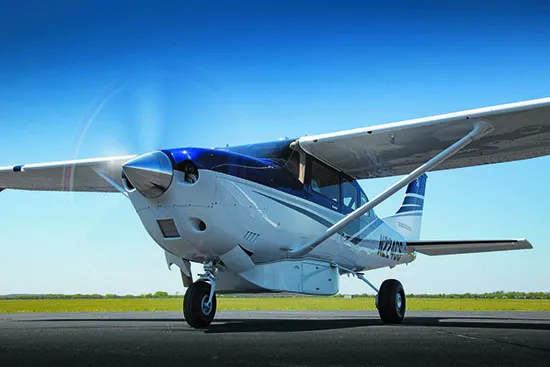
It’s a Cessna piston single, so finding a shop to work on a 206 is easy. Moreover, simplicity is a good thing, and helps keep maintenance costs down. But on the other hand, Stationairs are working airplanes by and large, and wear and tear can easily turn the tide in the other direction. Turbocharged engines add to the complexity, of course. And aging Stationairs aren’t immune to corrosion issues, like other aircraft.
We’ve seen problems with the tail, mostly corrosion caused by the foam-filled elevator and trim tab getting soaked with water and pulling off rivets, screws and nuts—a concern if the airplane was ever on floats.
Some of the brackets in the tail can crack. There have also been some instances of cracking door posts, though these problems have not proven to be a safety issue.
Given the number of respondents who routinely operate out of short and rough fields, combined with the nose-heavy landing tendency, we recommend paying close attention to the landing gear, brakes and the prop for erosion from the detritus on backcountry strips.
There have been a couple of 206/207 specific ADs: 85-2-7 calls for inspection of a roll pin in the fuel selector, and 85-10-2 mandates recurrent inspection or modification of the induction air box.
Other ADs of note are 91-15-4 and 82-27-2, inspection of the prop; 97-26-17, ultrasonic inspection and possible replacement of the crankshaft; 96-12-22, recurrent inspection of the oil filter adapter; and 2011-10-09, seat rails and roller housing inspection.
The 206/207 is subject to the infamous 84-10-1 fuel tank bladder AD.
There’s probably a modification available for the 206/207 to allow it to do most anything someone might want. This includes skis, floats, long-range tanks, STOL kits, vortex generators, cargo pods and various speed mods.
One can even opt for an STC’d 450-SHP Rolls-Royce turboprop engine, courtesy of Soloy. If that is too much, and the factory IO-520 isn’t enough, maybe an IO-550 from Texas Skyways would be another solution.
Vitatoe Aviation in Circleville, Ohio, offers cross-flow cylinder and induction upgrades for IO-520 engines and an STC’d IO-550 upgrade. It also has a variety of engine mods for the 210 Centurion. Visit the company webpage at www.vitatoeaviation.com for performance specs.
CAV Ice Protection has the weeping wing TKS upgrade for 206 F, G and H models.
As far as type clubs, there’s the Cessna Pilots Association, which as we recently reported is getting back up to speed. There’s also the Cessna Flyer Association. There are also a few active Facebook groups catering to Cessna 206 owners and pilots.
Speak with an aviation finance professional today to get your real rate on your next aircraft purchase!

These towns are heavily influenced by the presence of general aviation and residential airparks.

Welcome back to the fifth edition of Clearance To Fly. As a pilot and someone deeply entrenched in the world of aircraft purchasing and financing,

Welcome to this week’s edition of Clearance To Fly, your trusted guide for buying your first aircraft. I’m a pilot who’s spent years in aircraft

At Flying Finance, we’re your trusted partner in aviation financing. With a deep understanding of the aviation industry and a commitment to making your dreams take flight, we provide tailored financing solutions for business jets, piston aircraft, turboprop aircraft, helicopters and more. A financier who understands aviation.
405 Cherry Street, Chattanooga, TN 37402
© 2025 Flying Finance. All rights reserved. Privacy Policy